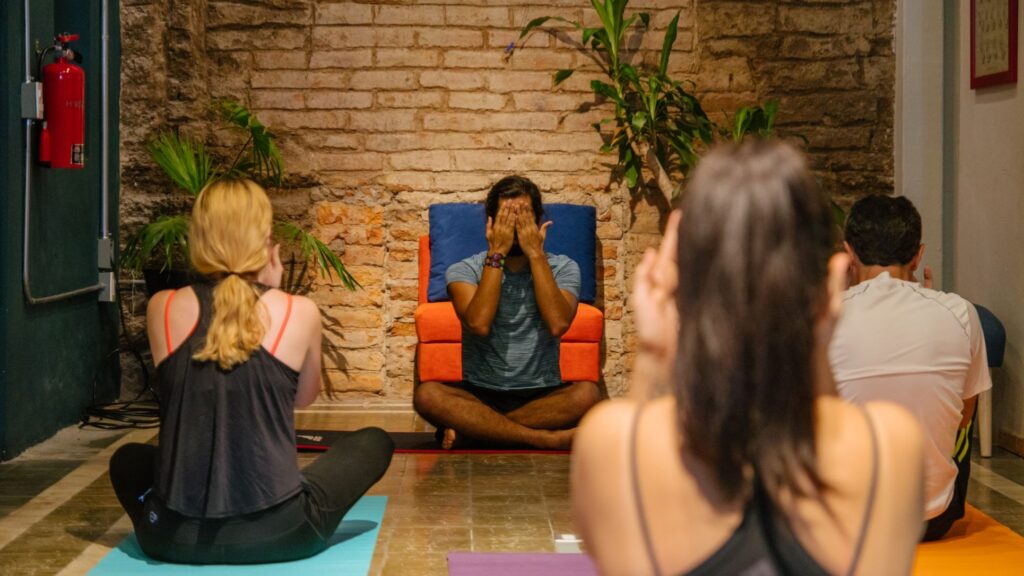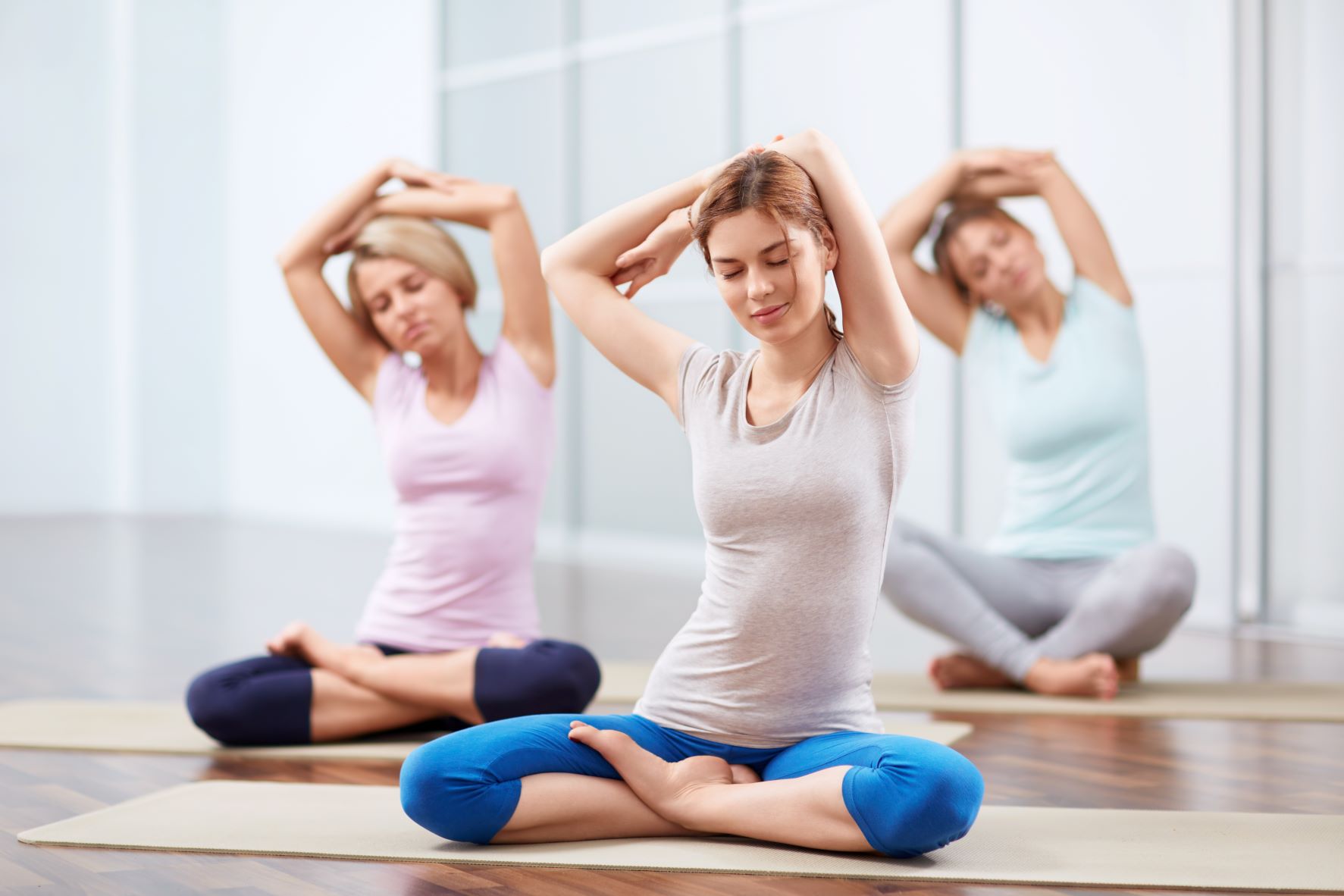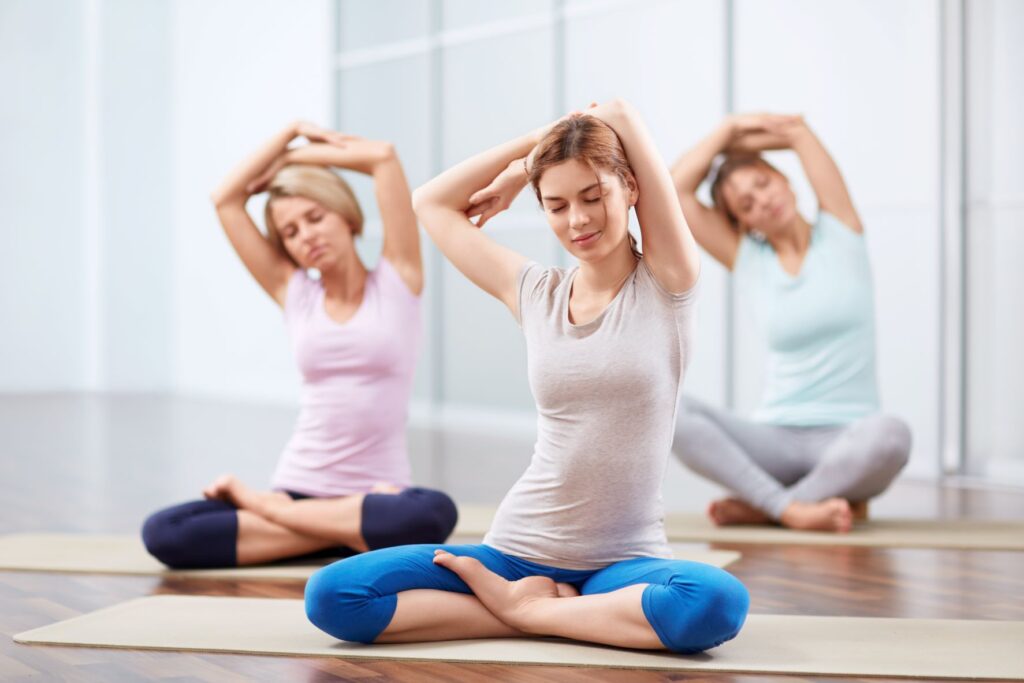Yoga can seem intimidating, especially if you’re overweight or out of shape. It’s true that some poses might not work out as well for you, but there are plenty of ways to start practicing.
Yoga is a great way to stay fit, relax, and connect with your body’s natural alignment. You don’t need to be a yogi or fit to try it.
- Keep Your Feet Wider
Yoga can help you lose weight and tone your muscles. It also helps to improve your balance and flexibility.
It can be daunting for people who are larger than they are to try yoga. They may be nervous about trying certain poses, or fear that yoga will make it look bad.
Some of these feelings can be normal and are not harmful. But if you find yourself feeling discouraged or negative about your ability to do yoga, it is important to stay strong and keep going.
It is best to take your time and listen to your body when you start yoga. If you feel pain or discomfort in a pose or need to modify it, do so.
You can do more than one yoga class each week, and you will see steady progress if you stay consistent and practice at home on a regular basis.
Start by learning a few slow and easy poses. These will help you build confidence in your abilities and ease you into the sport.
Mountain Pose, for example, is a great option. This classic pose can be difficult to attain for many overweight people because they have to keep their legs straight.
A simple modification that you can do to make this pose more accessible for overweight people is to widen the stance by stepping your feet wider. This will give your belly more room to move and compress, making this pose more comfortable.
You can also adapt this pose by using a balance ball to replace your hands and knees. This is a more difficult option for heavier people. Talk to your yoga instructor if you aren’t sure if a balance board is right for you.
To make it easier to do chair poses such as Chair Pose, keep your feet wide. This pose is great for strengthening your back muscles and glutes.
- Try slow and easy yoga styles
Yoga can be a great exercise to help you lose weight. But it is important to take things slow and easy. This will ensure you get the most out your practice and a positive experience.
It is also a good idea try different styles. This will give you a better understanding of which style is best for you and what type of teacher you prefer.
Iyengar yoga is a great option if you struggle with balance. This slow style uses props like straps and yoga blocks to help you balance.
If you are overweight, yin yoga is another great option. It focuses on relaxation and stretching. This gentler version is great for people with flexibility issues such as those with osteoporosis and those who have been injured.

This style of yoga can be very relaxing, and a great way for you to unwind after a hectic day. It can also help with weight loss by improving your sleep quality and reducing stress.
You can start with some basic poses, and if you are successful, you can move onto a more challenging class. This will help you build your confidence and improve the skills of your yoga practitioner.
You will stay motivated and return for more by taking an extra class each week. You’ll also be able to find a teacher who you enjoy working alongside and who can help you achieve your goals.
It is very important to choose the right yoga style for your needs and level of fitness. This will allow you to make the most out of your yoga practice, and prevent injuries.
There are a lot of different yoga styles that you can try, including hatha, Iyengar, and vinyasa. Each one has its own benefits and can be a good fit for people of all skill levels.
- Try Props
Props are often used in yoga practice because they help you get into poses that might be difficult for you if you were to do them without them. Props can also help you stay in poses for longer durations of time.
There are many types of props available, including straps, blocks, and bolsters. These are great tools to help you start your yoga practice, especially if you’re overweight.
Props can provide extra support and stability to help you get into advanced poses. They can also prevent injury or deterioration from old muscle injuries.
In addition, props can help you learn new poses faster and easier, and they can make yoga more accessible to a wide variety of people. They can also provide a way to modify certain poses, so you can work on them at your own pace.
A yoga strap or block, for example, can help you reach your feet higher if you have trouble doing a hamstring stretch while your feet are flat on the ground.
A bolster can also be used to lengthen your spine and assist you in doing difficult poses, such as cow pose or cat position.
A mat, which protects your body from falling to the ground, is another prop often used in yoga. To avoid injury to your joints and muscles, you should choose a yoga rug at least one-inch thick.
Carol Krucoff is a certified yoga teacher and founder the online program Yoga Sparks. A block is another useful prop that can be used in advanced poses. Krucoff explains that a yoga block, for example, can help you keep a long spine, and prevent your back from getting into a pigeon position.
It can also help you feel more connected to your body in a restorative pose, she says. To help you feel more relaxed and in a better position while performing restorative poses, such as child’s pose or corpse pose, you can use a bolster.
- Keep Motivated
Yoga is a great way lose weight and tone up. Yoga can help you feel more confident about your body and improve your mood. For some, however, weight can be a barrier to starting a new activity. You can still do yoga even if your weight is high and maintain your motivation.
Set goals for yourself when you start a new fitness program. There are many goals that you can achieve, but weight loss is the most common. You can also set goals for strength and flexibility. These goals will help keep you motivated to do yoga and help you stick with it.
You may be afraid of taking the plunge and trying a yoga class, as you don’t really know what to expect. It is important to ask the instructor any questions. They will be able to help you find the right classes for your body and needs.
In some cases, the teacher can schedule a private session with you to discuss your concerns or answer any questions. This is a great way for you to find out if yoga is right for your needs and to ensure that the instructor is a good fit.
Lentz also recommends that you find a yoga studio offering specialized classes to accommodate larger-bodied people. These classes are designed to accommodate a variety of body types and can be a great way to get a workout in without worrying about causing injury.
Another reason to keep motivated when you’re starting yoga after being overweight is that you’ll see improvement and progress every time you take part in a class. This is especially true if the class is something you have never done before. It is important to be open-minded and try different styles until you find the best one for you.
It is also important to have a supportive community around you, so be sure to ask for advice from others who have gone before you. You can also find people online that are on the same journey as you and have a common goal.




